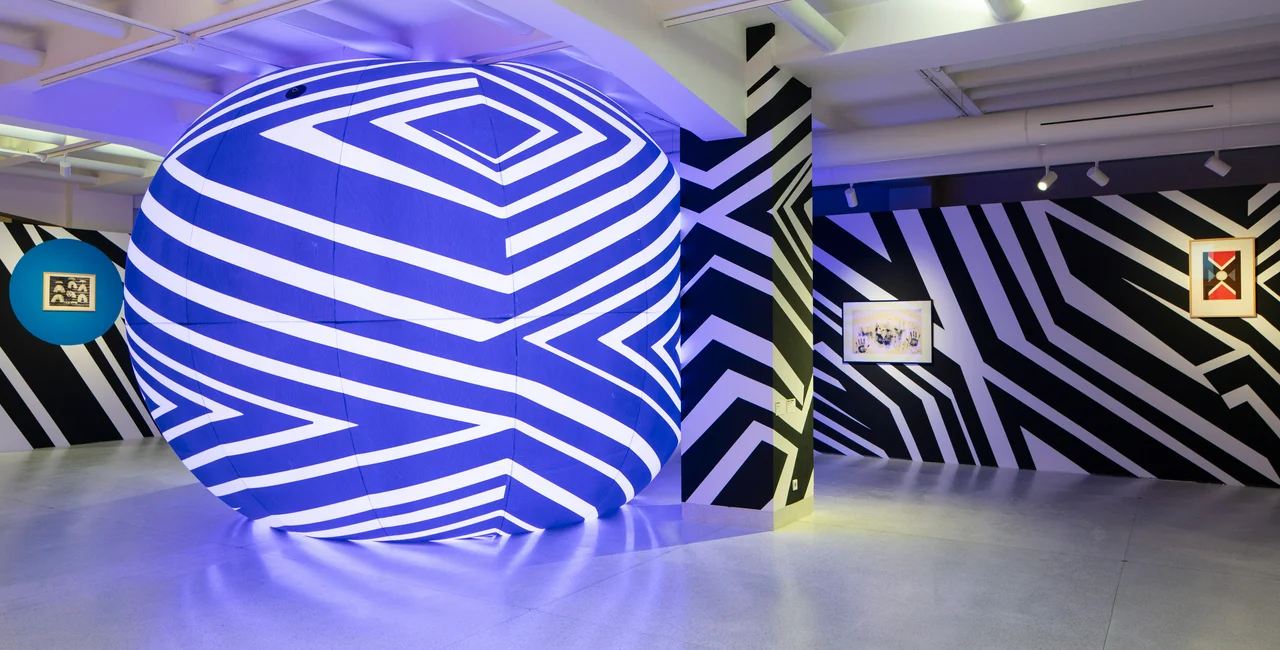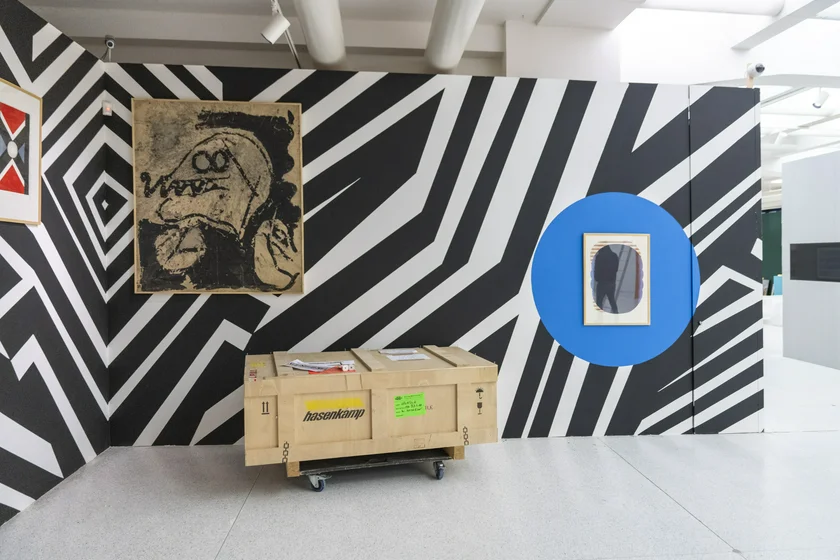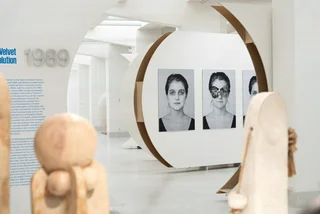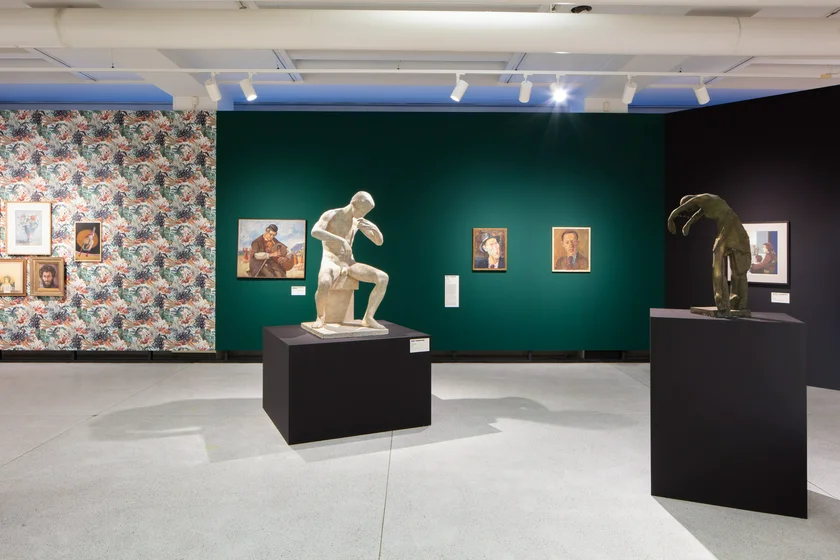Unveiled to the public in time for its spring opening last Thursday, the exhibition No Feeling is Final. The Skopje Solidarity Collection, hosted in the Trade Fair Palace of the National Gallery in Prague 7, may hold a somewhat cryptic title but ultimately appeals to what binds and brings us all together.
“We only rise by lifting others,” NGP general director Alicja Knast said while presenting a new international group exhibition, showcasing dozens of artists from the Museum of Contemporary Art Skopje (MoCA) in North Macedonia: Pablo Picasso, Niki de Saint Phalle, Alexander Calder, David Hockney, Brook Andrew, Nikola Martinovski, Zao Wou-Ki, Wifredo Lam, Gülsün Karamustafa, and many others.
Designed as a “time capsule” of late modernism with celebrated artists from the West, the former Eastern bloc, and the Global South, the collection means to spotlight the importance of solidarity and how art can work as a catalyst to rebuild what was lost.
Pride and tragedy
To help visitors understand the collection’s significance, the exhibition’s first part centers around the historical and political conditions that saw the birth of Skopje’s modern art collection, created due to a crushing and little-known tragedy.
In the early morning of July 26, 1963, a 6.1 magnitude earthquake struck Skopje as most residents were still asleep in their homes. The devastating tragedy killed over 1,000 people, injured thousands more, and left about 80 percent of the city under rubble.
Skopje was struck by an unforeseen catastrophe, but we will rebuild it again,” Yugoslav leader Josip Broz Tito famously said. “With the help of our entire community, it will become our pride and a symbol of fraternity and unity, of Yugoslav and of global solidarity.”
But as nature struck, leaving death, tragedy, and devastation in its deadly wake, the wheels of human solidarity were already in motion.
Coordinated by the United Nations, an unprecedented international wave of support and assistance saw dozens of nations worldwide – including both the United States and the Soviet Union – answer the call and come to the rescue to help rebuild Skopje.
All the more symbolic and significant, the relief effort was conducted at the height of the East-West divisions of the Cold War and less than a year after the Cuban Missile Crisis pushed the world to the brink of nuclear war. The small city of Skopje in non-aligned Yugoslavia would prove to be the focal point where walls fell, divisions disappeared, and bridges were built to unite nations of the world.
And art, as it turns out, played a crucial role in helping Skopje rise from the ashes.
As major urban and architectural reconstruction projects were implemented – including through the vision of notable Japanese architect Kenzo Tange – cultural revival was on the agenda, and artists from all around the world donated their works to the battered city.
'All artists of the world'
The outpouring of creative and artistic support was so extensive that a new institution had to be built to house the works of art. The Museum of Contemporary Art of Macedonia (MoCA) building opened its doors to the public in 1970, perched on a hilltop like a modern Parthenon, and soon became a key pillar of revival and a symbol of international solidarity.
First held in Kunsthalle Wien last year, the modified version on display in Prague presents a unique selection of MoCA’s collection, with additional donations from Czech artists and the National Gallery Prague itself, carefully picked by four contemporary artists and two artist duos: Jesper Alvaer and Isabela Grosseová, Brook Andrew, Yane Calovski and Hristina lvanoska, Siniša Ilić, Iman lssa, and Gülsün Karamustafa.
“The MoCA Skopje collection couldn’t be more timely, as it is centered around the theme of solidarity, which we believe needs to be revived today,” said co-curator Rado Ištok.
“What I find unique about the exhibition is that it brings a new perspective on the history of post-war modern art. It presents works by important Western artists we do not usually see in the Czech Republic, like David Hockney and Niki de Saint Phalle, while also introducing the audience to non-Western artists like Maria Bonomi and Wifredo Lam.”
Whether through archive materials, models of the city’s architectural landmarks, or photographer Elfie Semotan’s beautiful photography series, Skopje – the tragedy it went through as much as the rebirth it experienced – is never too far from the wandering eye.
But through their customized selection and personalized displays, where some of their works hold a silent but potent dialogue with the paintings, drawings, or sculptures they chose to showcase, the collection’s scope reaches far beyond its original impulse, exploring the different forms of solidarity over decades of artistic creation and creative experimentation.
No Feeling is Final. The Skopje Solidarity Collection, organized in cooperation with Kunsthalle Wien and MoCA Skopje, is open to the public from March 22 to Sept. 29 at the Trade Fair Palace building of the National Gallery in Prague. Open Tuesday to Sunday from 10 a.m. to 6 p.m.











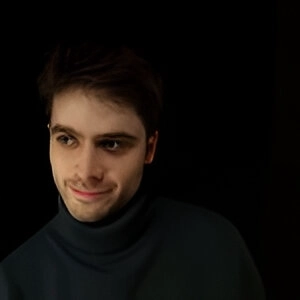
 Reading time: 4 minutes
Reading time: 4 minutes 